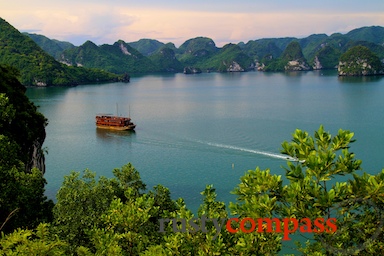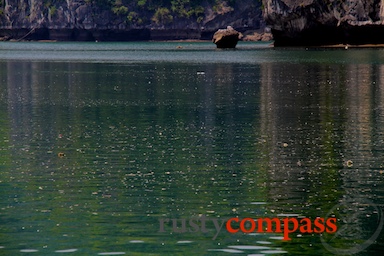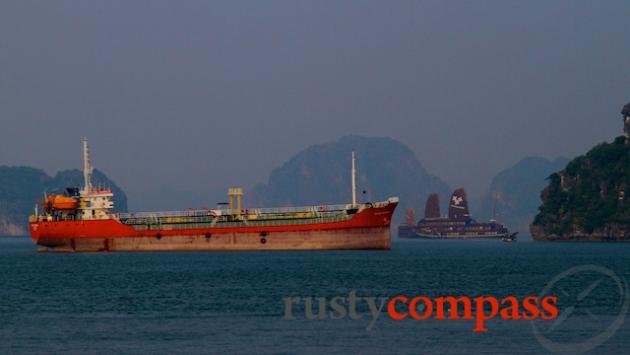
Photo: Mark BowyerStunning Halong Bay from Soi Sim Island
These days, the journey is around 3 hours and during the past decade, Halong Bay has well and truly entered the “must see’ traveller’s list - and for good reason. The World Heritage listed bay is one of Asia’s most spectacular natural attractions. The surge in visitors to the bay has also spurred investment in boats that provide quality overnight cruises for travellers wanting to spend more time on the bay. An overnight stay is a perfect way to experience the stunning late afternoon and early morning light.
But all is not well in Halong Bay.
Hosting more than two million travellers a year (we struggled to get precise stats), the bay is a huge cash cow for Vietnam’s tourism industry. But all eyes seem to be focused on the till, with little interest in the deteriorating state of the bay's natural environment or the dodgy boat operators exploiting it.
In February 2011, 12 people died when a tourist boat sank in calm waters during an overnight cruise. Precise details are sketchy but it’s clear that the safety standards required of the boats were woefully inadequate. A couple of months later, another boat sank, this time without loss of life. There were fatalities in another tragedy a few years earlier.
A big shakeup of boat management followed the February tragedy and there have certainly been some improvements, however travellers as recently as August 2011 have complained to us about appalling standards on some boats - including obvious poor safety standards. And the safety issue is only the first problem.
It seems reasonable to assume that if Halong Bay authorities are cavalier about the safety of tourists, environmental stewardship isn’t likely to get much priority either.

Photo: Mark BowyerRubbish in Halong Bay
Some of the pollution problems on the bay have obvious causes. Fishing villages dump a huge amount of their refuse directly into the bay - something that some simple measures, including some education, could easily improve. It’s hard to believe that best practice environmental standards are being observed by the tourist boats that the ply the bay either. It’s not unusual to see travellers tossing rubbish into the bay. Plastic is everywhere.
There is no evidence of any regular cleaning barges in operation - something that is common in other natural environments where plastic and other visible pollutants are a problem. Those charged with managing the bay seem disinclined to publish information about their environmental policies or the state of the bay either.
But while visible pollution like plastic and other rubbish might be the thing attracting the attention of travellers, there’s another problem. Halong Bay is a now a busy commercial shipping route and those coal freighters that frequently stand between you and your perfect sunset, are also taking an environmental toll.
So far, the contradiction in developing dirty coal shipping right through a heritage listed eco-system, that is one of the country’s major tourism cash cows, seems not to have been processed by authorities. But something is going to have to give. And both the spectacular natural environment and the many millions of foreign exchange that it generates are threatened. Judging by the comments of travellers during my recent time there, Halong Bay has reached its environmental tipping point. It’ll be a tragedy for Vietnam if major steps are not taken soon to rehabilitate the country’s most precious natural asset.





There are no comments yet.